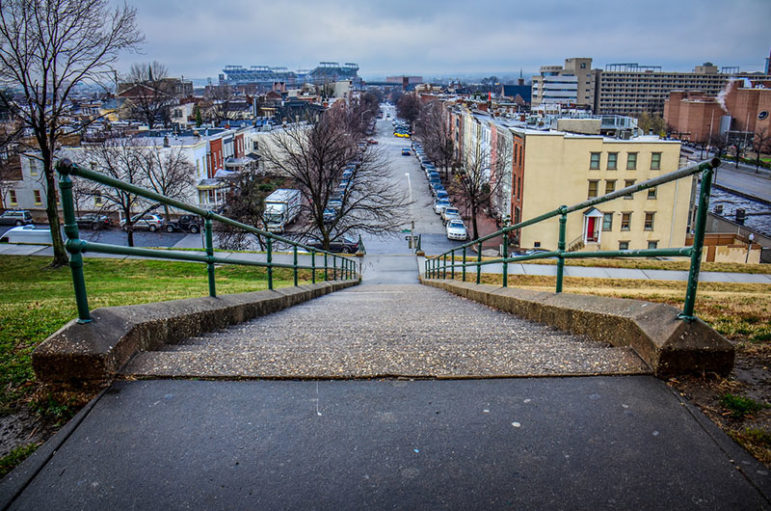
September 15, 2016; Science Blog
Baltimore’s residents can’t seem to catch a break. Baltimore, a longtime majority minority city plagued by urban poverty, a twenty-five percent unemployment rate, failing public schools, rampant crime, and an out-of-control police force now adds for-profit education shams and fraud to African American residents’ litany of setbacks.
In Baltimore’s public school universe, 86.6 percent of the 83,800 students are African Americans and they are at risk. Often, those who manage to complete high school are first-generation students without the navigational skills to succeed in two- and four- year public institutions. These schools, many without federally funded TRIO programs, learning communities, First Year programs, or any of the initiatives that increase student retention and success, allow students to fall between the cracks. When students see their opportunity for advancement disappearing, the quick credential offered by for-profit schools appears to be a viable option.
If a student entering community college—which, by law, must enroll all who apply—is not academically prepared for college-level coursework, their collegiate experience quickly becomes a nightmare. Students remain in remediation courses for semesters, using up their student loan money and earning zero college credit. Time passes, motivation disappears, students want careers and jobs…and those ads on the television for “Quick Fix College” start looking good.
For at least the last five years, most school districts have been under state mandate to assist students who have dropped out. Finally, this year, Baltimore Public Schools realized its responsibility to the out-of-school, unemployed and underemployed African American school-age people in the inner city. According to former City Schools CEO Gregory Thornton:
The plan includes a re-engagement center at the district office, which is officially opening next week, that will help students find an academic program that meets their needs and connects them with social and emotional resources. I am committed to the academic success of all our students, and students who have dropped out need additional support from us to graduate and achieve success in their future.
These reclaimed adult learners are the most at risk to enroll in duplicitous for-profit career education institutions. Without the benefit of guidance, they are persuaded that these institutions are a path to success. Students soon learn these institutions have less to do with education and than the business of making a profit. Classes are perfunctory and narrow in scope, teaching is rote, and the learning is questionable. Overworked instructors are less qualified than adjunct positions at public institutions and student supports are virtually non-existent.
Sign up for our free newsletters
Subscribe to NPQ's newsletters to have our top stories delivered directly to your inbox.
By signing up, you agree to our privacy policy and terms of use, and to receive messages from NPQ and our partners.
These institutions operate with limited administrative staff whose primary responsibility is recruitment. One of the more suspect practices at one institution was to establish a veteran’s organization on paper as a ploy to recruit unsuspecting vets. The University of Phoenix lost half its students after the Department of Defense refused to pay for the veterans enrolled in the school.
Critics of for-profit post-secondary institutions say their education offerings are substandard, their costs ridiculously high, their reliance on federal student aid to cover operating costs too great, and their descriptions of graduates’ job opportunities and employment placements ridiculously overstated. These complaints emanate from an assemblage of significant detractors: the White House, senators, the Secretary of Education, teachers’ unions, nonprofit education institutions, community colleges, and multiple state attorneys general.
The Department of Education, with strong support from the White House, instituted policies that safeguard students’ federal financial aid and in the process put the two largest national networks of for-profit education institutions out of business. Corinthian Colleges fell first, and others followed. Corinthian filed for bankruptcy under a cloud of state and federal allegations after closing twenty-eight schools and disrupting the education of sixteen thousand students. Last month, ITT Educational Services, the parent company of ITT Tech and the for-profit institution standard bearer, was forced to file for bankruptcy after the Department of Education rescinded federal aid to its new students. Prior to this filing, ITT Tech closed its one hundred and thirty-seven technical college campuses, affecting thirty-five thousand students and eight thousand employees.
Former Corinthian students will be able to recoup some of their loan payments with loan forgiveness programs resulting from the $820 million fine Corinthian was forced to pay. As the Secretary of Education observed, “When Americans invest their time, money and effort to gain new skills, they have a right to expect they’ll get an education that leads to a better life for them and their families. Corinthian was more worried about profits than about students’ lives.”
In the rush to protect the interests of largely low-income students, more thought could have been given to where and how students would complete their educations. A more effective strategy might have been to broker better agreements or arrangements with community colleges to work with disadvantaged students.
Do these for-profit educational institutions have any redeeming qualities? In contrast to conglomerates like Corinthian or ITT Tech, it appears that the smaller the operation, the better the outcomes. Effective for-profit education institutions are typically aligned with the industries that recruit their graduates. They understand their role in the educational pantheon; they leave a focus on “breadth and depth” to Cornell and Harvard. When for-profit education institutions are good, they can be pretty good—but when they’re bad, they’re criminal.—Mary Frances Mitchner













